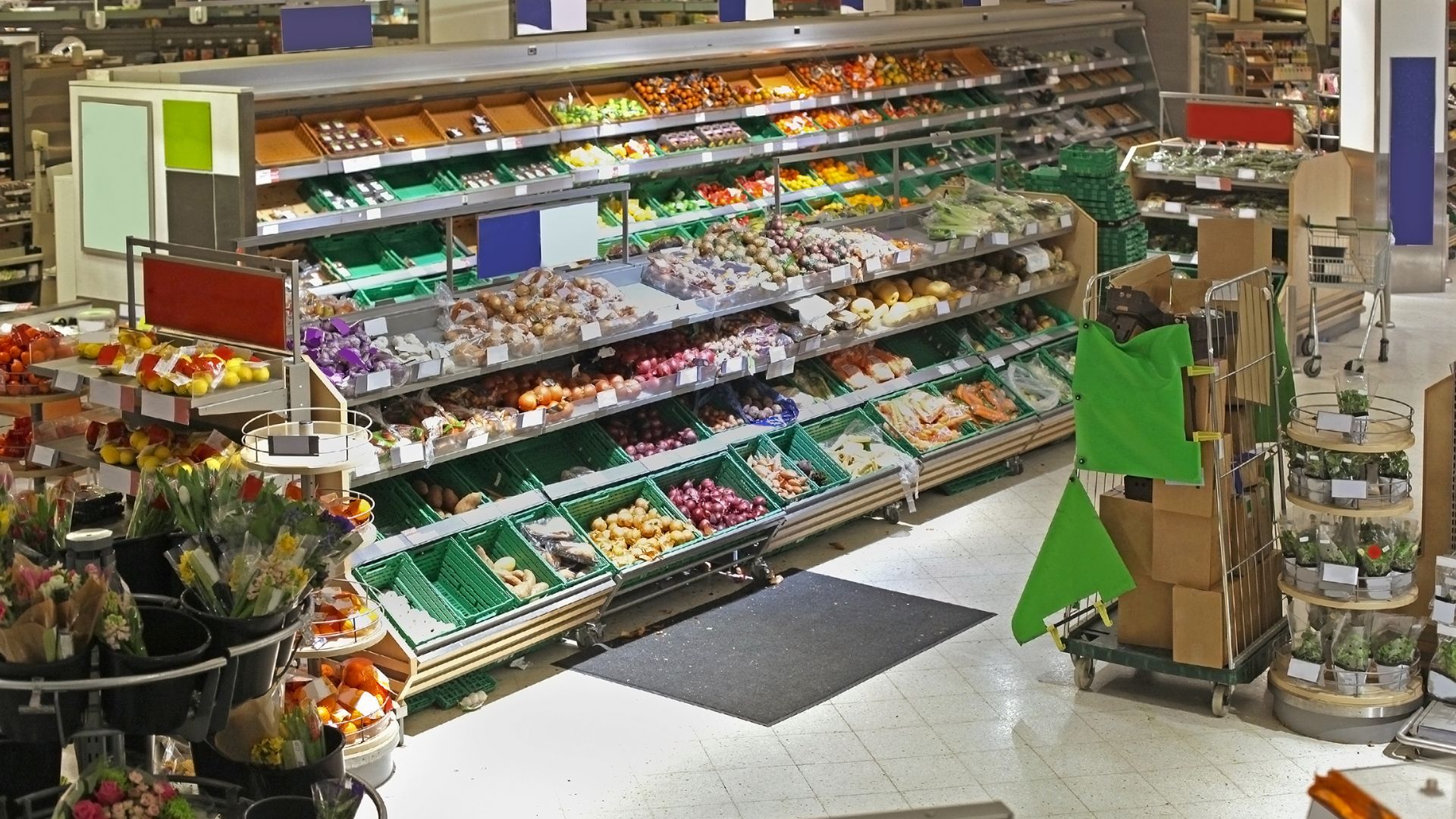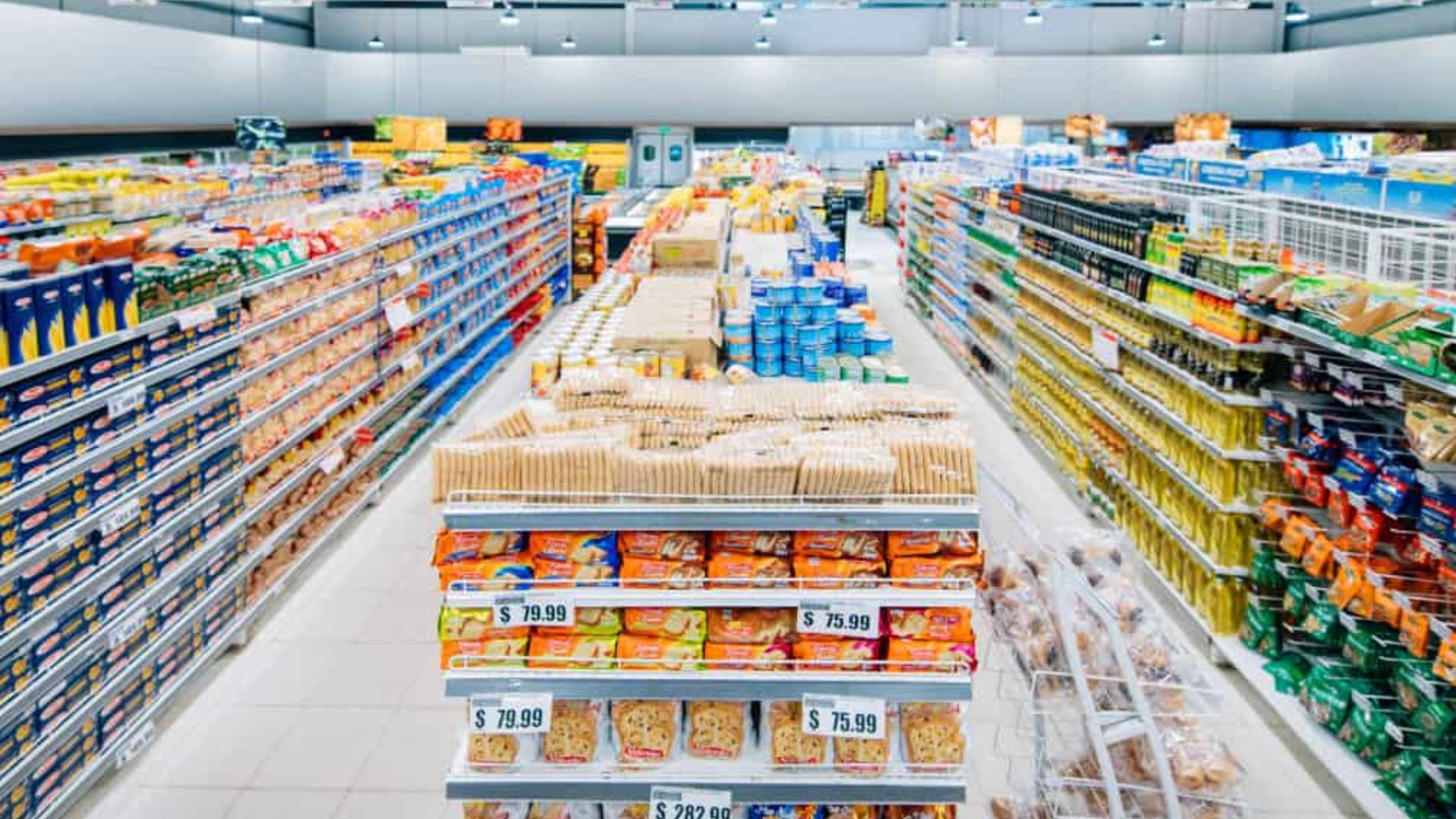Leading U.S. CPG manufacturers and retailers invest an astonishing $7 billion annually in manually tracking shelf availability and product-facing compliance. Despite this substantial effort, 8% of products remain out of stock, resulting in a significant 4.1% loss in revenue. This stark reality underscores the challenges retailers and CPG companies face in achieving perfect store execution, where product availability and presentation are vital for meeting consumer expectations and driving sales.
Perfect store execution is essential for retail success. It ensures that products are available, visible and effectively displayed on the retail shelves to be easily discoverable by in-store shoppers, influencing purchasing decisions and thus improving sales performance.
In this article, we will explore how retailers and CPG brands can leverage real-time data and cultivate a data-driven retail execution strategy, harnessing technology to address these challenges and elevate the overall customer experience in-store.
What is a Perfect Store?
A perfect store is one where the brand’s vision for product availability, visibility, and compliance with merchandising standards is fully realized inside stores. The ultimate goal of a perfect store is to create a seamless shopping experience by ensuring that products are always in stock, properly displayed, and easy to find, offering customers the convenience and optimal shopping environment. The perfect store represents the ideal execution of retail strategy, aligning marketing goals with the realities of the retail space.
Why Do You Need Perfect Retail Execution
80% of the consumers still prefer to visit their nearby stores to shop for their daily needs. The experience of shopping and product interaction will always be the distinguishing factor. Crafting a shopping experience that your customers can’t get enough of is crucial in today’s crowded retail landscape, where customers demand more personalized interactions. From ensuring product availability to offering tailored promotions and competitive pricinga well-crafted retail strategy elevates the customer experience.
For instance, a retailer with consistent stock levels and personalized product suggestions makes shopping more convenient and enjoyable, building loyalty. The goal is to deliver consistency across all touchpoints, ensuring that each in-store visit feels seamless and memorable.
The "Picture of Success" framework sets clear standards for product placement, availability, pricing, and display to define what an ideal store should look like. When retailers and brands collaborate on this shared vision, they can systematically measure retail execution to ensure that shelves are fully stocked, displays are enticing, and products are visible at all times. This structured approach optimizes efforts and enables continuous improvements. For example, a brand may track how well its products are positioned in various stores and adjust accordingly to maintain consistency.
Product availability, visibility, and display effectiveness form the backbone of successful retail execution. If customers can’t easily locate products or if items are out of stock, sales performance and brand perception suffer. Strategic placement, such as impulse-buy displays near checkouts, can significantly drive last-minute purchases. Ensuring shelves are organized and products are easy to find enhances the overall customer experience and ensures repeat business.
Also read: How to Develop a Perfect Store Strategy
Transitioning into a data-driven strategy, brands can leverage real-time insights to further refine these key areas, ensuring every decision is backed by measurable results. Data analytics takes retail execution from guesswork to precision, which we'll explore in the next section.
Essential Factors in Ensuring Perfect Retail Execution
Flawless retail execution depends on the alignment of strategic vision with operational precision. By focusing on key elements like data-driven strategies, cross-functional alignment between marketing and sales, and the integration of advanced AI technology, businesses can ensure that every aspect of their in-store operations drives sales and enhances the customer experience. Data-Driven Strategy for Retail Excellence
A data-driven strategy for retail excellence involves making decisions based on data analytics rather than intuition or assumptions. By relying on key performance indicators (KPIs), sales metrics, and customer data, retailers and consumer packaged goods (CPG) companies can optimize their store operations, resource allocation, and marketing efforts. This approach ensures that business decisions are aligned with actual store performance, improving both efficiency and profitability.
They are important because they are helpful in the following ways:
- Informed Decision-Making: Data provides clarity on store performance, helping brands and retailers identify issues and optimize strategies for better results.
- Optimized Inventory and Merchandising: Data enables precise tracking of stock levels and demand, ensuring products are available when and where they’re needed.
- Enhanced Operational Efficiency: Leveraging data insights streamlines resource allocation, improving cost-effectiveness and maximizing ROI on sales and marketing efforts.
Integrating KPIs into daily operations is essential for fostering a culture of accountability and continuous improvement. By embedding KPIs into the routine activities of store staff, retailers can ensure that every team member understands their role in achieving performance goals. Daily briefings and dashboard displays can provide real-time insights, allowing staff to respond quickly to emerging trends and challenges. This proactive approach empowers employees to take ownership of their contributions, leading to more informed actions that drive overall performance.
Furthermore, optimizing resource allocation based on sales potential and customer base is crucial for maximizing returns. By analyzing data on customer demographics and shopping behaviors, retailers can identify high-potential areas and allocate resources accordingly. This targeted approach not only enhances the customer experience but also ensures that marketing efforts are concentrated where they will yield the highest impact. For instance, tailoring promotions and staffing levels to match peak shopping times can significantly improve sales and customer satisfaction.
Lastly, customizing KPIs for individual stores allows brands and retailers to address unique challenges and opportunities within each location. By recognizing that one-size-fits-all metrics may not capture the nuances of different markets, brands and retailers can develop tailored KPIs that reflect the specific goals and conditions of each store. This customization enables more accurate performance assessments, fostering a deeper understanding of local customer preferences and operational challenges. Ultimately, this strategic alignment of KPIs with local contexts enhances overall effectiveness and drives sustainable growth across the retail network.
Transitioning from the importance of data in retail operations, it's equally critical for marketing and sales teams to collaborate closely to create a seamless and unified retail environment. This alignment ensures that every in-store execution is a natural extension of broader marketing strategies, ultimately enhancing customer experiences and driving sales.
1. Aligning Marketing and Sales
Retail execution should seamlessly align with the six Ps of marketing: product, price, place, promotion, people, and presentation. When marketing strategies resonate with in-store execution, they create a cohesive customer experience that not only boosts sales but also fosters brand loyalty. For instance, when a popular beverage brand launches a new flavor, coordinating its marketing campaign with eye-catching in-store displays can significantly enhance visibility and drive consumer interest.
Creating the ideal retail environment involves ensuring that products are readily available and strategically placed to capture customer attention. This can be achieved through tactics like positioning high-demand items at eye level or utilizing end-cap displays that highlight seasonal promotions. Also, setting visibility rules such as determining Must-Stock List items to be always available on the shelves.
Moreover, effective retail execution serves as a bridge between marketing and sales, resulting in higher conversion rates. When brands prioritize attractive product positioning and ensure competitive pricing, they increase the chances of customer purchases. For example, if a retailer features a well-promoted sale on a popular snack brand at the front of the store, shoppers are more inclined to take advantage of the offer, leading to increased sales volume.
Collaboration is also crucial; retailers must work closely with suppliers to design impactful in-store experiences via attractive shelf displays which is called ‘Planogram’. This includes crafting creative product displays that captivate shoppers and align promotional campaigns with customer expectations. A well-coordinated effort between a retailer and a supplier can lead to themed displays for holidays or events, creating an immersive shopping experience that resonates with customers.
Also read: Top Strategies to Boost Sales in Your Retail Grocery Store
Ultimately, a focused approach on enhancing shopper experiences through compelling product displays and strong retailer collaborations will not only elevate the shopping journey but also drive sales and build lasting brand relationships.
2. Overcoming Implementation Challenges
One of the primary challenges in achieving perfect store execution lies in standardizing benchmarks across various store formats and regions. Each location presents unique factors that affect execution, making it difficult to apply a one-size-fits-all approach. For example, a store in a bustling urban area may have different foot traffic patterns and customer preferences compared to a suburban location. This variance can lead to discrepancies in performance metrics, complicating efforts to maintain consistency across the retail network.
Additionally, collecting accurate data across multiple stores can be complex. Without real-time insights into store conditions, enforcing execution standards uniformly becomes a daunting task. For instance, if a retailer lacks visibility into stock levels or display accuracy across locations, it may struggle to address issues like stockouts or incorrect displays effectively. This lack of oversight not only impacts customer satisfaction but can also lead to lost sales opportunities.
Sales representatives or field force often face limitations regarding the tools and skills necessary to assess store conditions accurately. Empowering them with the right resources and training is critical for enhancing store execution efforts. For example, equipping sales teams with mobile apps that provide real-time data and checklists can significantly improve their ability to monitor store compliance and identify areas for improvement.
3. Leveraging Technological Innovations
Technologies like crowdsourcing, AI and image recognition are revolutionizing retail execution by providing retailers with powerful tools to gain real-time insights into store conditions. For instance, solutions such as Paralleldots' ShelfWatch enable brands to monitor product displays and stock levels continuously, ensuring that products are always presented correctly on the shelves.
Manual sore audits/ survey-based applications that CPG brands and retailers heavily rely on today are outdated and pose their own challenges. Manual audits are slow, cumbersome, error prone and cover only a section of the fraction of the stores, thus giving a very coarse-grained view of one’s retail execution performance. Need for quick decision making and fixing issues is the need of the hour. That is where technologies like AI, image Recognition come to the rescue.

With AI-driven capabilities, brands can swiftly identify and address issues like stockouts or improper displays before they negatively impact sales. This proactive approach not only improves operational efficiency but also significantly enhances customer satisfaction by ensuring that shoppers find what they need when they visit the store.
Moreover, automating the data collection and analysis process allows retailers to track compliance with established benchmarks quickly and accurately. By utilizing image recognition technology, brands can capture in-store conditions without the need for labor-intensive manual checks. For example, a grocery chain can implement image recognition to assess whether promotional displays are set up correctly, streamlining the compliance verification process and freeing up staff to focus on customer engagement.
Advanced technology also ensures that compliance checks are more precise and consistent. Real-time data aids in verifying that stores meet their key performance indicators (KPIs), which is essential for maintaining high standards across the board. As retailers continue to adopt these innovative technologies, they can create a more efficient and responsive retail environment that ultimately drives sales and improves the customer experience.
Also read: Building the Perfect Retail Execution Strategy – with Image Recognition.
This evolution sets the stage for further advancements in retail operations, particularly as businesses explore the potential of integrating more sophisticated technological solutions.
4. Strategic Use of Key Performance Indicators
To track retail performance effectively, KPIs should adhere to the SMART framework—Specific, Measurable, Achievable, Relevant, and Time-bound. Clear and actionable KPIs enable retailers to monitor store success and pinpoint areas needing improvement. CPGs have established KPIs to measure such as On-Shelf Availability (OSA), Share of Shelf (SOS), Pricing data, Planogram and Promo compliance score, which enables brands to track stock levels, brand-share and product visibility and displays more effectively
Setting realistic targets is equally crucial, as it keeps teams focused on achievable outcomes without overwhelming them. For instance, rather than aiming for a massive increase in sales overnight, a retailer might set incremental goals that allow staff to adapt and improve gradually. This approach not only fosters a sense of accomplishment but also encourages continuous improvement in-store execution.
As retailers refine their use of KPIs, they position themselves to drive meaningful change and enhance overall performance. This strategic focus on measurement and accountability will pave the way for more informed decision-making in the future, as businesses continue to adapt to an evolving retail landscape.
5. Enhancing Field Efficiency
Integrating crowdsourcing with traditional store audits can provide retailers with a more comprehensive view of store conditions. This hybrid approach helps maintain high standards while reducing audit costs. Insights from crowdsourced data can reveal issues that may not be captured during standard audits, leading to a more accurate assessment of each location.
Focusing on stores that show the highest growth potential allows retailers to maximize their return on investment. By directing resources toward these locations, sales representatives can concentrate their efforts where the gains are most significant. For example, directing efforts toward a newly opened store with promising customer interest can lead to accelerated sales growth.
Moreover, utilizing technology to monitor and enhance store execution boosts sales force productivity while reducing operational costs. Tools like ShelfWatch provide actionable insights, empowering sales teams to focus on impactful actions, such as optimizing product placement and managing inventory effectively.
This data-driven approach ensures that sales representatives spend their time on highly productive store visits. With access to real-time data on store conditions, they can proactively address issues, improving store performance and elevating customer satisfaction. As retailers continue to leverage technology in their operations, they set the stage for more efficient and effective practices that enhance both employee productivity and the overall shopping experience. This strategic focus on operational excellence will be essential for navigating the evolving retail landscape in the future.
Conclusion
In conclusion, achieving perfect retail execution is essential for driving sales and fostering brand loyalty in today’s competitive retail environment. By integrating SMART KPIs, using real-time monitoring tools like Paralleldots' ShelfWatch, and focusing on tailored shopper experiences, retailers can drive growth and improve execution across all stores.
Schedule a demo with ParallelDots today to discover how our advanced computer vision solutions can transform your retail execution strategy and drive business excellence.


